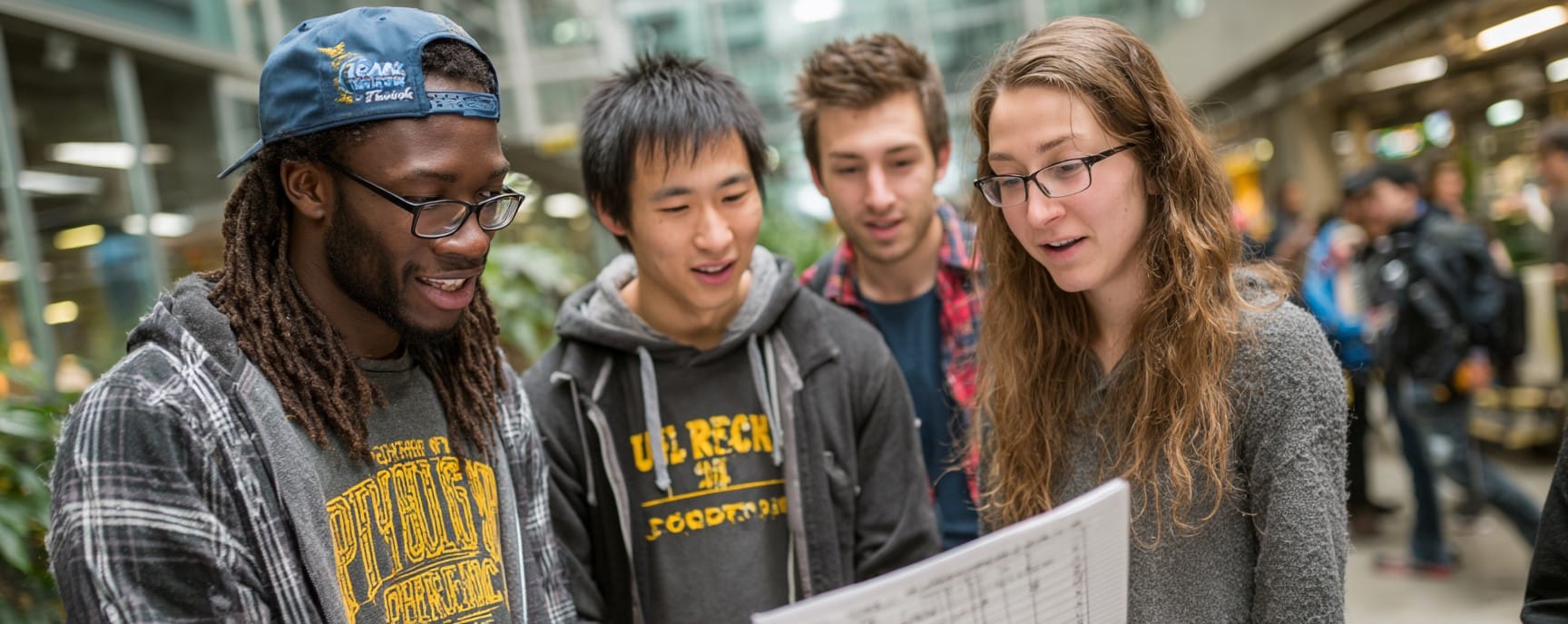- What Is STEAM Education?
- History of STEAM
- What Is the STEAM Process?
- What Is the Difference Between STEAM and STEM Learning?
- Why Is STEAM Education Important?
- Scholarships for STEAM Teachers
- Continuing Education for STEAM Teachers
- For Parents: How to Pick a School That Emphasizes STEAM
- Q&A with Amanda Flocchini, middle school science teacher
- How do you incorporate STEAM into your lessons?
- What benefits do students get from STEAM instruction?
- Does your school encourage STEAM instruction or do you take it upon yourself to implement it in your classes?
- What kind of training or resources did you need to start using STEAM in your classroom?
- What advice do you have for teachers who want to incorporate STEAM instruction in their lessons?
Featuring expert advice from Amanda (Mandy) Flocchini, STEAM teacher
If you keep seeing the acronym STEAM but don’t quite know what it refers to or how to incorporate this kind of learning into education, this guide is for you. Whether you are a teacher, administrator, or parent, we’re here to help you learn more about this 21st-century approach to K-12 education.
What Is STEAM Education?
STEAM education focuses on creating related and interconnected curricula designed to champion innovation in 21st-century topics. As defined by STEAM Education, it stands for “Science and Technology, interpreted through Engineering and the Arts, all based in Mathematical elements.” This style of teaching focuses on providing an adaptable framework for education that highlights relationships between subject areas rather than cordoning each off. By taking this approach, education becomes more fluid and students learn how each discipline depends on the other.
What the Expert Says“I have found great success with hands-on activities and that is exactly what STEAM is: applying science knowledge to real-world applications through technology, engineering, art and math.” – Mandy Flocchini
History of STEAM
STEAM is the brainchild of researcher Georgette Yakman and was first developed in 2006. Her experience working in education led her to believe in the usefulness of incorporating ideas of creativity and innovation often seen in art into STEM (science, technology, engineering, and math) education. Yakman began implementing a STEAM curriculum in 2007 and worked to provide professional development for teachers a few years later. By January 2019, nearly 3,000 teachers in the U.S. and 38 countries had been trained in the STEAM method.
All this being said, many of the core tenets of STEAM have been around for centuries. As far back as the 15th century, individuals such as Leonardo da Vinci saw the value in bringing together the scientific and artistic worlds to innovate.
What Is the STEAM Process?
Having a STEAM-centered classroom requires educators to go through six sequential steps with their students. These help form the basis of any lesson or teachable moment and help students develop a process for learning.
FocusThis first step requires students to identify the essential question or problem that needs to be answered or solved. Teachers should possess a clear understanding of how this question or problem directly correlates to educational standards.
DetailThe detail phase focuses on identifying the key elements that created the question or problem in the first place. How do these elements fit together to create this? By going through this step, you begin to notice some of the knowledge or skills students already possess that can aid in the answering/solving phase.
DiscoveryThe discovery phase is all about bringing together research and figuring out what fits and what doesn’t with the problem at hand. This time can be used for identifying research gaps or learning new skills/processes needed to bring the lesson together.
ApplicationThe application step brings together all of the learning and research to actually answer a question or solve a problem. Students begin to see how they can now create an innovative solution using all of the tools and research gathered up until this point.
PresentationSharing what you’ve learned is an important part of the STEAM method, and the presentation portion allows for this. Students get to creatively express their academic journey and give/receive feedback.
LinkThis final step brings together the project as it stands alongside the feedback given. Students have the opportunity to revise their work and incorporate what they learned from fellow students and their teacher.
What the Expert Says“I try to make science concepts as accessible for my students as possible. The more they get to create, build, and test the better. We use the engineering design process to create new ideas and test concepts, and we utilize computer programs to analyze data. We have used code.org to start understanding how coding and programming works and I have had students excited to create triangles and measure the size of the angles without complaining about doing math.” – Mandy Flocchini
What Is the Difference Between STEAM and STEM Learning?
While STEM (Science, Technology, Engineering & Mathematics) focuses explicitly on scientific concepts and grew out of an interest in modernizing the future American workforce in light of the technology boom, STEAM is in some ways the second-generation version. While keeping science, technology, engineering, and math as core topics, STEAM also brings in art to help students learn how to leverage methods such as problem-based learning and inquiry commonly used in more creative fields.
While some critics of STEAM feel that it may lead to fewer students pursuing postgraduate studies in traditional STEM topics, a National Endowment for the Arts study found evidence that suggests otherwise. The study tracked learners who completed a STEAM curriculum in high school; it was found that these learners were 21% more likely to attend college as compared with those who lacked an arts education yet were just as likely to pursue a STEM major.
Why Is STEAM Education Important?
The Bureau of Labor Statistics projects that STEM occupations will grow by 8.8% between 2018-2028, compared with 5% for non-STEM jobs. The median annual wage was projected as $86,980 in 2019. Non-STEM jobs averaged annual wages of $38,160 during the same time frame. Providing this type of education sets students up well for future job prospects, but it also gives them a learning framework that will benefit them in many different areas of their personal and professional lives.
Reports from 2015 show that learners who study art and music all throughout high school score an average of 98 points higher on their SATs than those who took a half year or less of such classes. By engaging in art education, students learn how to become better listeners and communicators while also developing an appreciation for adaptive thinking.
What the Expert Says“The number one benefit I see through STEAM instruction is heightened engagement. My students are excited about the STEAM focused lessons I carry out in my classes.” – Mandy Flocchini
Scholarships for STEAM Teachers
| Name of Scholarship | Scholarship Description | Who Qualifies | Amount |
| NSHSS Higher Education Grant | The National Society of High School Scholars provides this award to help educators work toward professional development goals. | NSHSS members currently employed by a private or public high school | $2,500 |
| ACS-Hach High School Chemistry Classroom Grant | The American Chemistry Society provides this award to help teachers outfit their classrooms with the tools needed to carry out innovative teaching. | Public or private high school teachers who plan to use the funds for lab equipment, instructional materials, professional development, field students, or science outreach. | $1,500 |
Continuing Education for STEAM Teachers
Plenty of continuing education resources exist for teachers who want to keep learning about the STEAM method. The University of Pittsburgh provides a continuing education course requiring between 30-45 hours for $499. The University of San Diego’s Professional and Continuing Education department provides a similar online program that is self-paced and cost $1,200.
Outside of colleges and universities, the Institute for Arts Integration and STEAM provides several continuing education courses in areas such as instructional strategies, social emotional learning and the arts, and the creative mindset.
For Parents: How to Pick a School That Emphasizes STEAM
While STEM schools have proliferated in the last decade, it’s still not a given that you can search for a STEAM school in your area and find one nearby. That being said, parents can still find schools that potentially have specific classes that implement STEAM or are moving toward incorporating the framework. A few tips for finding these schools and encouraging the use of the STEAM method include:
Reach out to your local teachers’ associationIf a STEAM school currently exists in your area or there are plans to start one, these professionals will likely be the first to know. Check with the National Education Association to find your local chapter.
Learn more about what to look forStratford School provides a solid, succinct overview of what a STEAM curriculum may look like, even if the school doesn’t call it that.
Talk to fellow parentsGetting parents on board with STEAM implementation can help move the process along more quickly and get buy-in from important stakeholders. It can also make the process easier for educators and administrators.
Create a makerspaceOffer to supply a school-based makerspace where students can use their imaginations in less formal ways but still continue building the skills associated with STEAM education.
Q&A with Amanda Flocchini, middle school science teacher
How do you incorporate STEAM into your lessons?
I teach middle school science which easily allows STEAM incorporation. I have found great success with hands-on activities and that is exactly what STEAM is: applying science knowledge to real-world applications through technology, engineering, art and math. My students work on a multitude of STEAM activities throughout our curriculum including: the building and programming of cardboard-framed robots, making their own chemistry themed board games and creating their own research videos using iMovie or PowerPoint to name a few.
I try to make science concepts as accessible for my students as possible. The more they get to create, build, and test the better. We use the engineering design process to create new ideas and test concepts, and we utilize computer programs to analyze data. We have used code.org to start understanding how coding and programming works and I have had students excited to create triangles and measure the size of the angles without complaining about doing math.
Technology is such a big part of our lives right now it only makes sense to harness these tools within the classroom. The future requires more and more need for STEAM experience and I strive to prepare my students for success in their future lives.
What benefits do students get from STEAM instruction?
The number one benefit I see through STEAM instruction is heightened engagement. My students are excited about the STEAM focused lessons I carry out in my classes. We focus on the why when we encounter STEAM instruction. Students make connections between their current learning and how it can be applied outside of the classroom. All students have different strengths and by encouraging STEAM learning and especially having them work in groups to complete these activities, everyone gets a chance to shine.
I have had many students go home and use what they learned in class to create something. You wouldn’t see a student create a worksheet at home, but they will build themselves a robot or draw a picture using Excel algorithms. This excitement is also transferred to the parents and I love having parents tell me about how excited their student was to share what they learned in science class.
Does your school encourage STEAM instruction or do you take it upon yourself to implement it in your classes?
I initially took it upon myself to start implementing STEAM education. I have attended several NSTA (National Science Teacher Association) conferences and was inspired to bring what I learned through these intensive weekends back to my classroom. My administration is very supportive of these teaching methods and I have been able to build my curriculum based on what I have learned through many of these conferences. The NGSS standards really call for STEAM integration at all grade levels. I am going to be participating in this year’s NSTA STEM20 virtual conference next week.
I work at a K-8 school and I have invited the lower grades down to my middle school science room to work with the older kids on STEAM activities. We have showed the younger students the robots and the kinetic toys that were designed by my STEM elective students. We have also done mini STEAM lessons with the older kids as mentors. Our mentor lessons have included building mini catapults, planning and building popsicle stick bridges and making paper flying machines that mimic the movement that maple seeds have as they fall to the ground. These mini lessons have inspired my fellow teachers to explore more STEAM options and it is wonderful to see our student population get excited about learning in a whole new way!
What kind of training or resources did you need to start using STEAM in your classroom?
STEAM education can be very intimidating at first. It requires a lot of pre-planning and lots of materials, but it is all worth it! Once the activity is rolling, the classroom is engaged and the learning begins so easily. I became very inspired after my first NSTA conference. Many associations offer STEAM focused conferences and webinars. At every conference I attend, I enjoy being the student again. If you love learning through STEAM instruction, you will be able to share that love with your students. A good STEAM activity is one that changes every time you do it. I find myself wanting to create or build whatever the students are doing every time I carry out most of my STEAM lessons.
I search for STEAM ideas that have already been created online and making them work for my classroom. Pinterest or TeachersPayTeachers have great resources and lesson ideas. Search for the topic you want to incorporate a STEAM activity with and see what you can find. Even if an activity doesn’t go perfectly, your students will appreciate your effort to think outside the box and bring them something other than a textbook or worksheet. Once they get a taste of STEAM instruction they will crave more!
STEAM instruction materials can be quite simple. Many activities call for things like cardboard, construction paper, paper plates, glue, tape, scissors and popsicle sticks. You will need a lot of cardboard! I have found success including many different mediums within my STEAM activities. When the lower grades come to my room for our mini lessons, I usually start by discussing the engineering design process, then showing a short video to introduce the idea (crash course for kids videos on YouTube are awesome for this!), then we discuss the project and have the kids plan, and finally we build and test.
What advice do you have for teachers who want to incorporate STEAM instruction in their lessons?
I have two pieces of advice for teachers who are new to STEAM instruction. First, start small. There is a lot of information out there about STEAM and it can become overwhelming quickly. Start with a small activity that feels manageable and go from there. Don’t feel like you need to order a 3-D printer and robotics kits right away! Second, look into attending a conference focused on STEAM instruction. You will be able to chat with other teachers who are also interested in STEAM, from teachers who are very experienced to those who are just starting out like you. Some of my best ideas have not come from the conference sessions themselves but from chatting with other attendees in between sessions.



